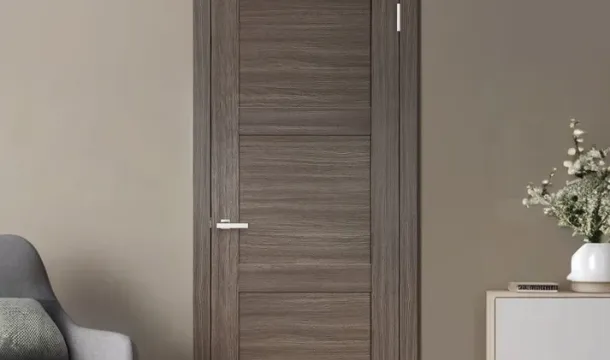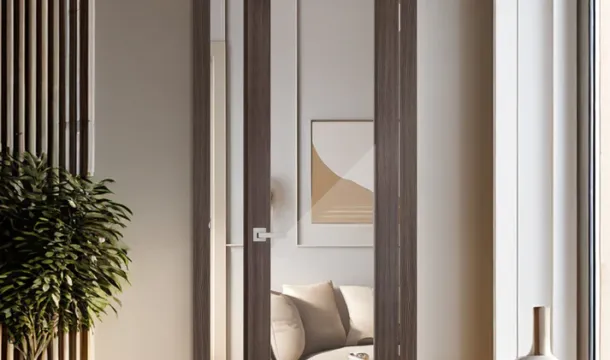Understanding Interior Doors and Their Role in Your Home
Popular Articles
Interior doors are more than just functional barriers that divide rooms; they play a significant role in enhancing the overall design and comfort of your home. Whether you’re updating a few rooms or completing a full renovation, the right choice of interior doors can impact the flow, privacy, and noise levels in your living space.
Before selecting interior doors, it’s important to understand the various options available. Interior doors come in different types, such as hinged doors, sliding doors, bifold doors, and pocket doors. Each style serves a different purpose and caters to unique design preferences. For example, sliding doors can maximize space in smaller rooms, while panel doors can add a touch of classic elegance.
In addition to style, the material of the door can affect not only its appearance but also its durability and soundproofing capabilities. Solid wood doors offer superior sound insulation and a luxurious finish, but they may be more expensive. On the other hand, composite materials, like MDF (medium-density fiberboard), are affordable alternatives that still offer a high-quality look.
Ultimately, the right interior door should balance function with aesthetics, providing privacy where needed and enhancing the overall theme of your home’s design.
Choosing the Right Interior Door for Your Home
Choosing the right interior door involves more than just picking a style you like; it requires careful consideration of materials, door types, and how they fit into your overall home design. The first step is selecting the appropriate material.
- Wood: Solid wood doors are known for their timeless appeal, strength, and durability. They provide a natural, warm look and are available in a variety of finishes. However, they come at a higher price point.
- Composite Materials: Doors made of MDF, fiberboard, or laminate are cost-effective yet still provide a stylish appearance. They offer versatility in finishes and are less prone to warping than wood doors.
- Glass: Glass doors, often framed with wood or metal, can create a bright, airy feeling by allowing light to pass through. Frosted or patterned glass can maintain privacy while still providing a modern aesthetic.
The door type is another important consideration. Panel doors, characterized by their raised panels and classic design, are perfect for traditional homes. Flush doors, with their smooth, flat surfaces, are more suited for modern and minimalist interiors. For space-saving solutions, sliding or bifold doors are excellent choices, especially for closets or small rooms.
Ultimately, the style of the door should harmonize with the existing design of your home. A modern interior may call for sleek, minimalist doors, while a rustic or traditional design might benefit from solid wood or paneled doors.
Preparing for Interior Door Installation
Before diving into the actual installation, it’s essential to thoroughly prepare. Proper planning and measuring can save you time, frustration, and additional costs.
-
Accurate Measurements: Begin by measuring the width, height, and thickness of the door frame. It’s crucial to get these measurements right, as even a slight error could result in a poorly fitting door. Ensure you also measure the depth of the door frame to determine whether the door you’re installing is compatible.
-
Tools and Materials: Assemble all necessary tools, including a drill, screwdriver, measuring tape, level, hammer, and shims. Additional materials like screws, door hinges, and a doorstop may also be required depending on the type of door you’ve chosen.
-
Assessing the Door Frame: Before you install the new door, check the frame for any signs of damage. Cracks or warping in the frame can prevent the door from fitting correctly. In some cases, you may need to repair or reinforce the frame to ensure a solid fit.
-
Prepping the Door: If your new door requires a finish or paint, it’s easier to apply these coatings before installation. This way, you can ensure an even application without the inconvenience of painting after the door has been hung.
By preparing in advance, you can avoid common installation challenges, such as misaligned hinges or an uneven door fit.
Step-by-Step Interior Door Installation Process
Now that you’ve prepared your tools and materials, it’s time to begin the installation. Follow these steps for a smooth and successful installation.
-
Remove the Old Door: Start by unscrewing the hinges and gently removing the old door from the frame. Be careful not to damage the door frame, as this will make the new installation more difficult.
-
Fit the New Door: Position the new door in the frame to ensure it fits properly. You may need to trim the edges slightly if the door is too large. Use a level to make sure the door is aligned correctly.
-
Attach Hinges and Hang the Door: Once you’ve ensured a good fit, attach the hinges to the door. It’s usually best to align the new hinges with the positions of the old ones. Use screws to secure the hinges, then carefully hang the door by attaching it to the frame.
-
Adjust for a Perfect Fit: After hanging the door, check to see if it swings smoothly and sits correctly within the frame. Use shims to adjust the door’s alignment if necessary. Ensure the gap between the door and the frame is even along all sides.
-
Final Touches: Once the door is installed, attach the door handles, locks, and any additional hardware. Test the door to make sure it closes and latches properly.
If you’re not comfortable with DIY projects or if you have a particularly complicated door style, it may be worth hiring a professional installer. They’ll ensure that the door is installed correctly, saving you time and effort.
Finishing Touches and Maintenance Tips for Interior Doors
With the door installed, you’re almost done, but the final touches are just as important as the installation itself.
-
Applying a Finish or Paint: If your door is unfinished, now is the time to apply a coat of paint or stain. Choose a color or finish that complements the room’s décor. A semi-gloss or satin finish is often ideal for interior doors, as it provides durability and is easy to clean.
-
Installing Handles and Locks: Select high-quality handles and locks that match the style of your home. Sleek, modern handles work well in contemporary spaces, while ornate or vintage-style hardware may be better suited for traditional homes.
-
Ongoing Maintenance: To keep your door looking and functioning at its best, perform regular maintenance. This includes tightening loose screws, oiling the hinges, and cleaning the surface to prevent dirt buildup. Doors in high-traffic areas may require more frequent care.
-
Extending Door Lifespan: Regular care will help extend the lifespan of your interior doors. Repainting or refinishing them as needed can refresh their appearance and protect them from wear and tear.
By following these steps, you’ll not only install a beautiful, functional door but also ensure it remains in top condition for years to come.
This comprehensive guide walks you through everything you need to know about choosing, installing, and maintaining interior doors for your home. With the right materials, preparation, and attention to detail, you can transform the look and functionality of your interior spaces with beautiful, high-quality doors.
Popular Articles

Soundproofing Interior Doors: Which Options Are Best for Your Home?

Choosing the Perfect Interior Doors for Your Canadian Home
